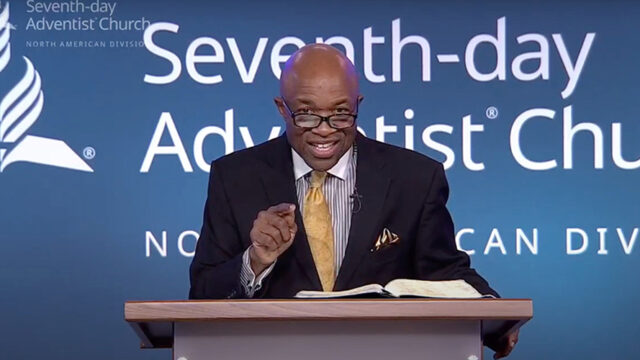E is for exercise, the energizer of life.

At age 91, Grace was still active playing tennis, lifting weights, and walking. Fifty-one years before, however, at the age of 40, her condition had been very different. Grace’s spine was badly injured during a ski accident that occurred at the time, and as the years passed her back pain intensified. Her physician told her that he couldn’t do much to help her because she was “too old.” Grace later was diagnosed with emphysema and had difficulty breathing.
Grace, however, had a strong will to recover and decided to try an exercise program offered at a local medical center. For six weeks she worked out three times a week, two to three hours a day. She lifted weights, walked on the treadmill, rode the stationary bicycle, and did breathing exercises. Even when she was in pain and didn’t feel like doing anything, she didn’t quit. Eventually, her breathing improved and the back pain disappeared. She was able to walk reasonable distances—and had energy to spare! Her doctor told her that he had never seen such progress in anyone her age. Grace attributes her health improvement to exercise.1
Benefits of Physical Exercise
Regular exercise is not only a preventive measure; it also works to maintain health at its best. Studies clearly demonstrate that participating in regular physical activity provides many health benefits, including improved cardiorespiratory and muscular fitness, improved bone health, reduced symptoms of depression, lower risk of coronary disease and stroke, lower risk of type 2 diabetes, among many others.
Studies show that people who are physically active for approximately seven hours a week have a 40-percent lower risk of dying prematurely than those who are active for fewer than 30 minutes a week.
Heart disease and stroke are two of the leading causes of death worldwide. Studies show that a significant reduction in the risk of cardiovascular disease occurs at activity levels equivalent to two and a half hours a week of moderate-intensity physical activity.
The decline in bone density during aging can be slowed with regular physical activity. Research studies of physical activity to prevent hip fracture show that participating in two to five hours of physical activity per week of at least moderate intensity is associated with reduced risk.
Metabolic Syndrome is a condition in which people have a combination of high blood pressure, abdominal obesity, an adverse blood lipid profile (low levels of high-density lipoprotein [HDL] cholesterol, raised triglycerides), and impaired glucose tolerance. Studies have shown that people with metabolic syndrome respond to persistent, regular physical activity; a restrictive diet; and appropriate medications.2 Other studies show that those who engage regularly in moderate-intensity aerobic activity have a lower risk of developing type 2 diabetes than do inactive people.
Research shows that within a year it’s possible to achieve weight stability through two and a half to five hours per week of walking at a pace of about four miles per hour.
If you want to postpone your funeral, exercise regularly!
Three Types of Physical Activities:
Physical exercises are generally grouped into three types3 and have different effects on the body:
1. Flexibility exercises, such as stretching, improve the range of motion of muscles and joints.4
2. Aerobic exercises, such as cycling, swimming, and walking, focus on increasing cardiovascular endurance.5
3. Resistance exercises, such as weight training, increase muscle strength6 and lower or prevent bone loss associated with menopause.7
The Best Physical Activity
Dr. Kenneth Cooper, of Aerobics fame, promotes brisk walking rather than running or jogging. Walking can be done almost any time or place, and enjoyed alone or with friends. Comfortable walking shoes and clothing are all that is needed. Brisk walking exercises most muscles and systems of the body. It stimulates the release of endorphins, which elevate the mood and improve one’s outlook on life.
More than 150 years ago Ellen G. White said, “Walking, in all cases where it is possible, is the best exercise, because in walking, all the muscles are brought into action.”8
Exercising Faith
As regular aerobic exercise helps us live better, so it is with the exercise of faith. We can trust God to lead our lives according to His loving prescription for health.
Kathleen Kuntaraf, now retired, was an associate director of the General Conference Health Ministries Department.
This is the second in a 12-part series. You can read the rest of the series here:
01 Choices: https://www.adventistreview.org/lets-celebrate-choices
1 “An Exercise Story”; http://nihseniorhealth.gov/stories/ca_grace.html. Accessed online April 4, 2012.
2 “Effect of Physical Activity and Diet on the Treatment of Metabolic Syndrome”; http://www.bioportfolio.com/resources/trial/75943/Effect-Of-Physical-Activity-And-Diet-On-The-Treatment-Of-Metabolic-Syndrome.html. Accessed April 20, 2012.
3 “Your Guide to Physical Activity”; http://www.nhlbi.nih.gov/health/public/heart/obesity/phy_active.pdf. Accessed online April 4, 2012.
4 D. O’Conner, M. Crowe, W. Spinks (2005), “Effects of static stretching on leg capacity during cycling,” Turin, 46 (1), pp. 52-56. Retrieved October 5, 2006, from ProQuest database.
5 J. Wilmore, H. Knuttgen (2003), “Aerobic Exercise and Endurance Improving Fitness for Health Benefits,” The Physician and Sportsmedicine, 31(5). 45. Retrieved October 5, 2006, from ProQuest Database.
6 N. de Vos, N. Singh, D. Ross, T. Stavrinos, et al. (2005), “Optimal Load for Increasing Muscle Power During Explosive Resistance Training in Older Adults,” The Journals of Gerontology, 60A(5), pp, 638-647. Retrieved October 5, 2006, from ProQuest Database.
7 WebMD (Nov. 10, 2010), “Resistance (Strength) Training Exercise”; www.webmd.com/a-to-z-guides/resistance-strength-training-exercise-topic-overview. Accessed online April 4, 2012.
8 Ellen G. White, The Health Reformer, July 1, 1872.








